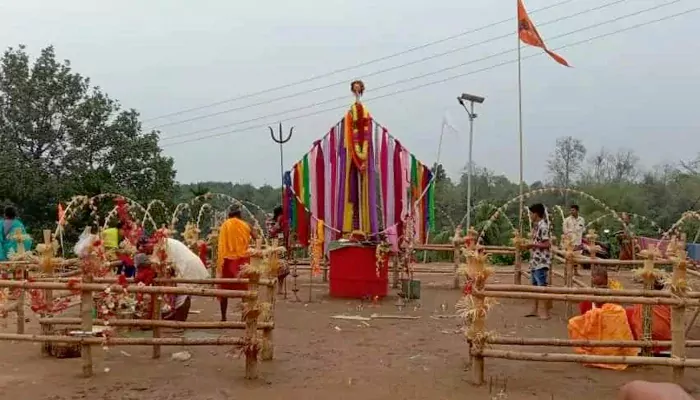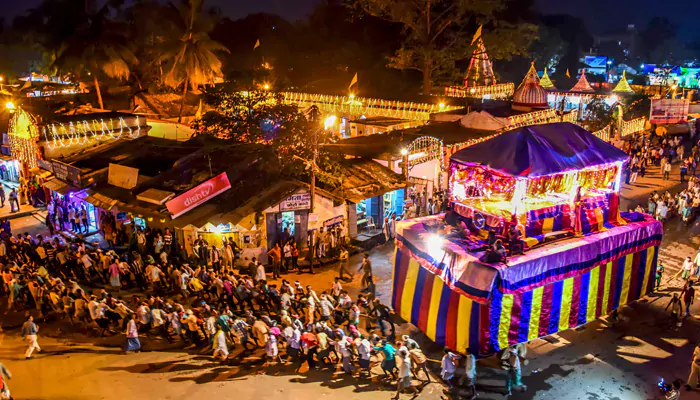
Beyond the fireworks and flower petals, these forgotten rituals once anchored communities to nature, divinity, and each other
India is renowned for its vibrant festivals, but behind the limelight of Diwali and Holi lies a quieter reality: many indigenous, tribal, and ancient celebrations are fading away unnoticed. These weren't merely events—they embodied shared memories, spiritual anchors, and ecological calendars. To forget them is to forget our true past.
Here are eight such festivals—rites of rain, fire, harvest, and kinship—now hanging by a thread.
Every June, the Kamakhya Temple in Assam closes its doors. Not for renovation—but to honour menstruation. For three days, the goddess Kamakhya is said to be in her cycle. Worship pauses. The temple bleeds. And when it reopens, thousands take home a piece of red cloth soaked in sanctity. A Tantric ode to fertility, power, and feminine divinity—Ambubachi remains one of India's most radical spiritual expressions, now quietly confined to regional pockets.
Held by the Jenu and Betta Kuruba tribes of Coorg, Kunde Habba is as irreverent as it is cathartic. Participants mock, abuse, and even symbolically scold their gods—a collective outburst permitted once a year. Born from a myth where Lord Ayyappa abandoned the tribes, this celebration flips the script on divine authority. In its rage lies release. In its humour, healing.

(Credit: Wikimedia )
In the tribal belt of Nandurbar, March pulses with the rhythm of the Bhils and Pawras. Equipped with Tarpa flutes and deer-horn headgear, they dance beneath the moonlight to honour Goddess Bhawani. Offerings of liquor and fowl signify devotion, not decadence. In this intensely local yatra, tribal India still honours its forest gods.
After the fields are sown, the Ao Nagas pause to breathe. Moatsu, celebrated in early May, is a time for rest, reflection, and reunions. Villages host dance feasts, build symbolic bridges, and share rice beer. It's a peaceful celebration of land, labour, and community spirit. However, in the shadow of the Hornbill Festival, Moatsu struggles to maintain its place.

(Credit: Adivasi Lives Matter)
Among the Tripuri tribes, Garia isn't just a god—he's the very spirit of sustenance. In April, a bamboo idol is crafted, livestock are sacrificed, and young dancers twirl in honour of a bountiful harvest. Rooted in jhum agriculture, Garia Puja is a vital ritual of reciprocity between man and nature, seldom heard of beyond the hills of Tripura.
In Mithila, November brings not firecrackers but clay birds. Sama Chakeva is a heartfelt sibling festival where sisters craft figurines, sing folklore, and send their creations down rivers. It's a delicate, devotional story of exile, return, and love—set to the rhythm of women's voices. Modern urban life has reduced it to barely a whisper.

(Credit: GOI )
Forget effigies of Ravana. In Bastar, Dussehra isn't about Ram—it's about Devi. This 75-day spectacle in Jagdalpur features oracles, wooden chariots, and the elevation of tribal girls to divine status. It is the longest Dussehra in the world and possibly the most misunderstood.
For the Oraon, Munda, and Ho tribes, Sarhul in April is not merely a festival—it is a solemn covenant. The Sal tree is venerated. The village priest offers water to the ancestral spirits. Nature is not just a backdrop; it is regarded as the deity. Sarhul embodies ecological reverence that was ahead of its time, yet few outside Jharkhand are even aware of its existence.